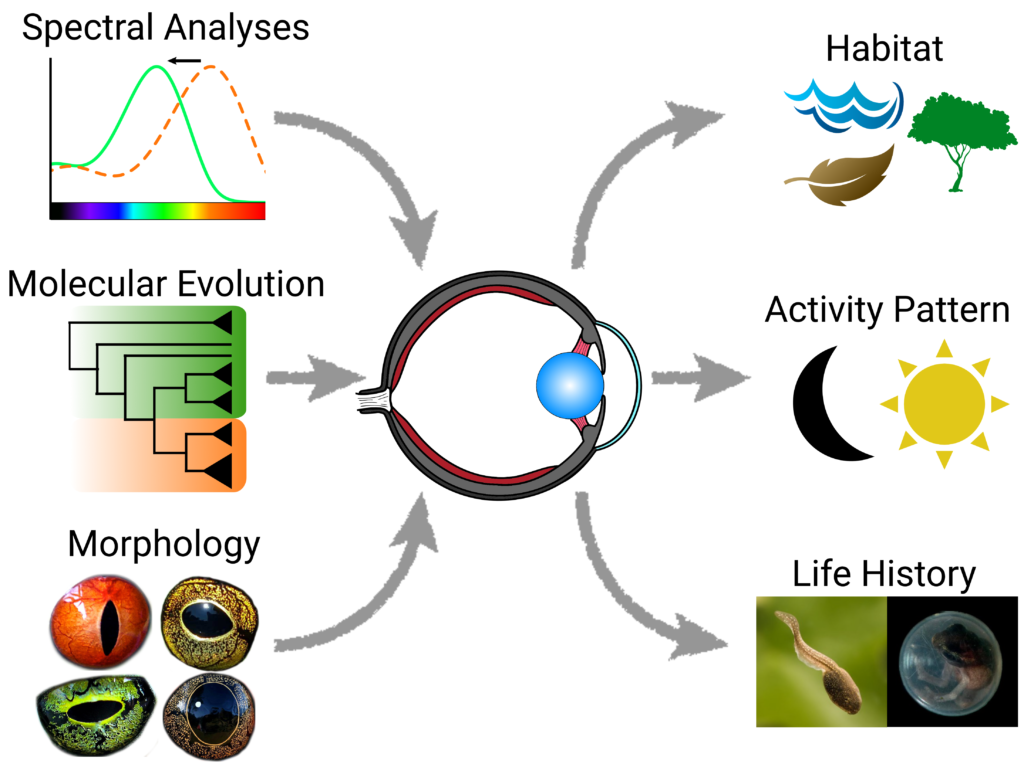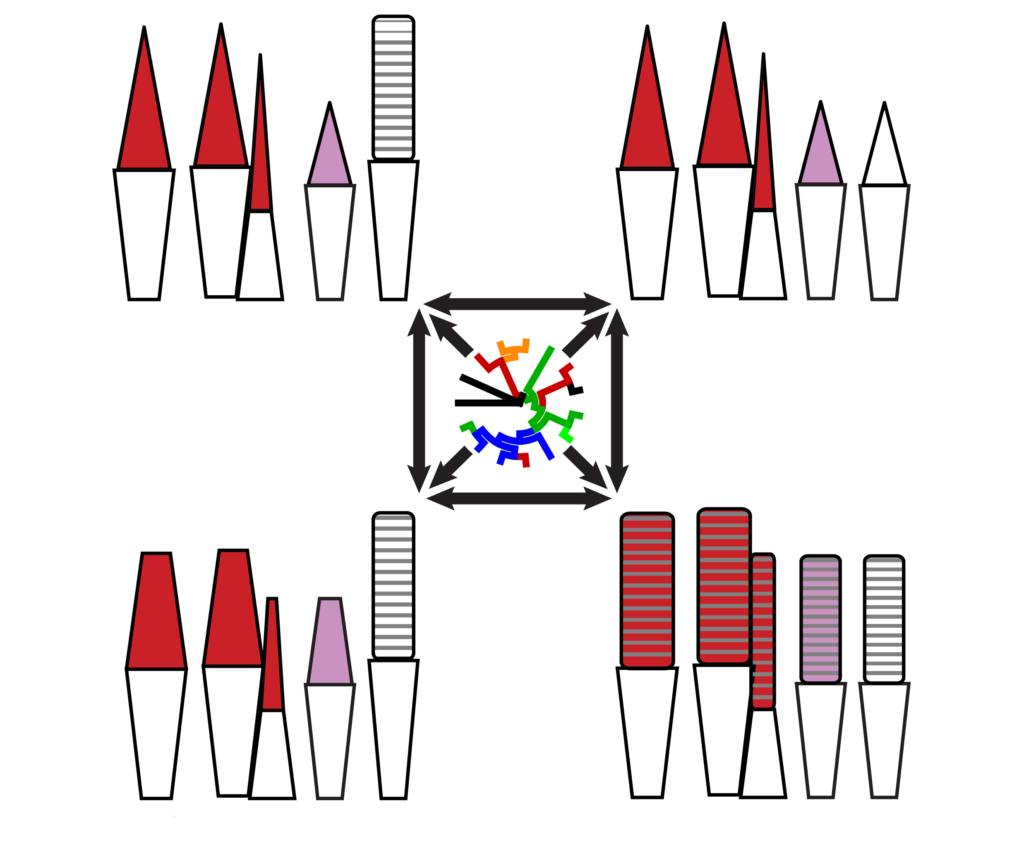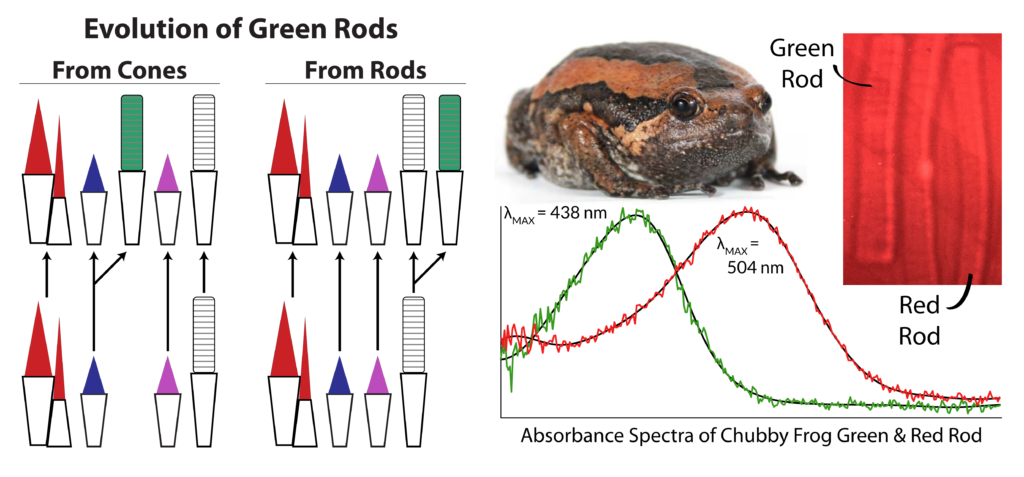Our research interests lie broadly in how selection at the molecular level can shape morphological and functional diversity at the organismal level. We are particularly interested in complex systems and how molecular and developmental changes can lead to the evolution of complexity. On top of that, our lab is also interested in the mechanisms of adaptation and how different groups respond to similar selective pressures. Sensory systems are an ideal model within which to study these questions, as they provide a direct interface between an organism and its environment.
The long-term objective of our research program is to better understand the evolution of vertebrate visual systems and how they develop and adapt in response to different sensory environments. Our research takes an innovative and integrative approach that combines comparative genomics and evolutionary computational analyses with targeted experiments to provide a comprehensive view of visual system evolution and function at multiple organizational scales.
Currently, the focus of our research is on the molecular evolution and development of the vertebrate visual system, particularly in the molecular basis of the evolution of new photoreceptor cell types and how the visual system adapts to different light environments and lifestyles. Below are three of our current areas of focus:
1) Uncover major patterns of visual evolution and development across the amphibian tree of life
Amphibians are a highly diverse group that exhibit a wide variety of activity periods, ecologies, life history characteristics, and behaviors. These factors are known to influence the evolution of visual systems in other vertebrates, but have not been well studied in amphibian. This research aims to characterize spectral, genetic, and morphological diversification of the visual system in amphibians as it relates to these major transitions. This research is part of an international collaboration with Rayna Bell (California Academy of Sciences), Matthew Fujita (UT Arlington), and Jeff Streicher and David Gower (Natural History Museum London).

2) Investigate evolution and development of new photoreceptor cell types
To maintain vision across the range of natural light levels vertebrates typically utilize a duplex retina that contains rod photoreceptors for achromatic dim-light vision and cone photoreceptors for bright-light and colour vision. Many lineages have deviated from this pattern in independent and distinct ways. Snakes and geckos, for exmaple, have a predominance of simplex retinas that contain, at least superficially, only rods or only cones. Simplex retinas can evolve either through the loss of one photoreceptor type or through evolutionary transitions between types, termed photoreceptor transmutations. These two mechanisms can also contribute to the evolution of unique and complex photoreceptor configurations as well as novel photoreptor types. The goal of this research is to determine the contribution of these two evolutionary mechanisms to the evolution of different simplex and duplex retinas, as well as to uncover the molecular, developmental, and functional changes that accompany theses transitions.


3) Determine convergent and novel mechanisms of visual evolution during fossorial adaptation
Fossorial (burrowing) lifestyles have evolved numerous times across of the vertebrate tree of life and are accompanied by unique morphological, physiological, and sensory adaptations to surviving and navigating subterranean environments. In terms of vision, fossoriality is often associated with reduced eye size, loss of cone photoreceptors, and relaxed constraint acting on visual genes leading to eventual pseudogenization and loss. Most previous studies have focused on mammals, whereas other vertebrate groups with fossorial adaptations are less well studied. Several amphibians (e.g., caecilians) and squamate reptiles (e.g., blind snakes, worm lizards, and blind skinks) have convergently evolved fossoriality along with worm-like bodies and reduced eyes. Limited studies of their visual systems suggest these lineages have lost cones, but our preliminary analyses in caecilian and blind genomes uncovered many intact, and presumably functional, cone genes. Whether and where these genes are expressed, and what functional role they play, is unknown. More detailed comparative genomic studies of these lineages are needed to determine how their visual systems have adapted to fossorial light environments. With this research we are leveraging comparative genomics to investigate visual system evolution in fossorial amphibians and squamates to test the hypotheses that fossorial lineages will show convergent relaxation of selective constraint and visual gene loss associated with fossorial adaptation and positive selection indicative of neofunctionalization.
